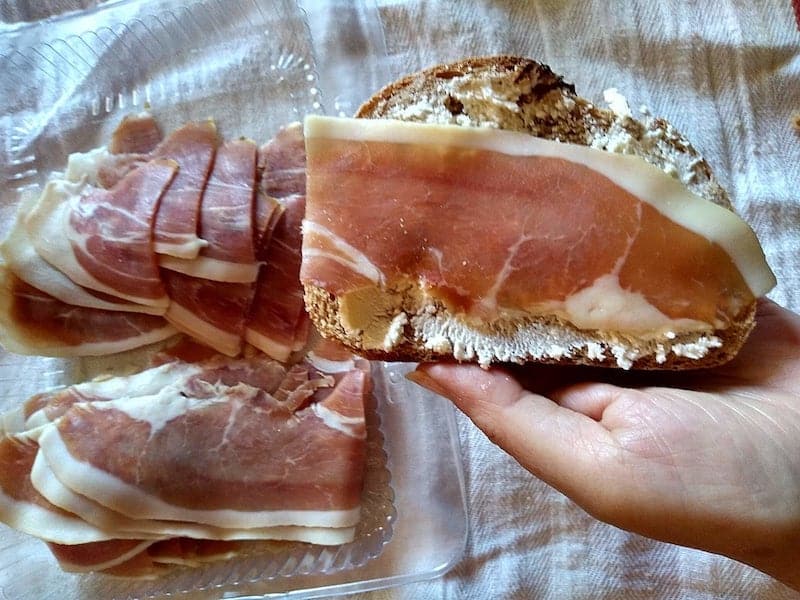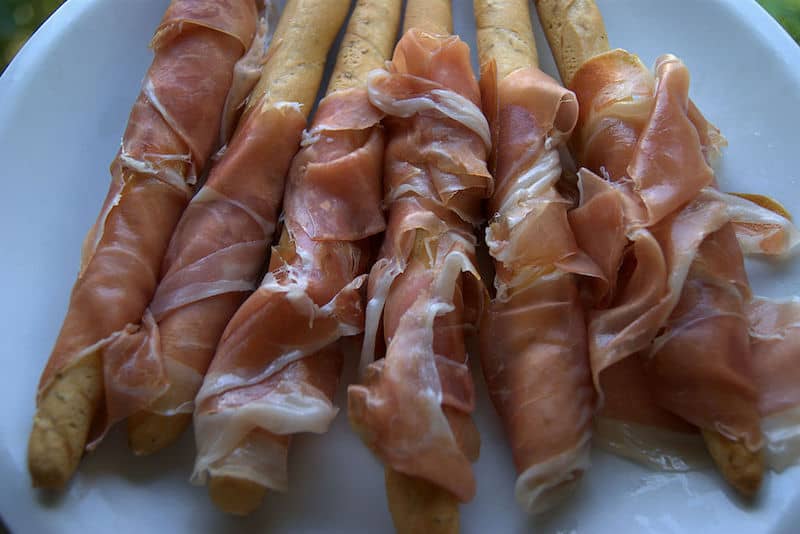Do You Need to Cook Prosciutto?
Prosciutto is one of the most delicious cured meats, renowned for its high-quality and rich flavor. However, many people are confused as to whether prosciutto needs to be cooked or not.
So, do you need to cook prosciutto? In this article, I’ll tell you everything you need to know about preparing prosciutto.
Hint, the answer here is no; prosciutto doesn’t need to be cooked. It’s perfectly safe to eat as is, and it’s definitely very tasty. Prosciutto is best eaten as is. Sure, you can cook it, but you might destroy the flavor and texture by doing so.
Read on to learn more.
Is Prosciutto Cooked or Not?
Prosciutto is a dry-cured ham that originates from Italy. Let’s take a look at the process of making prosciutto to understand it better.
Prosciutto is usually made from a pig’s hind leg or thigh. Depending on the size of the ham, the production process can last from several months to several years.
The ham first gets cleaned and salted. Then, the salt is added to draw the moisture out of the meat. This process takes about two months, and during this time, the ham is carefully pressed to remove the water and blood.
After the ham is salted, it’s time to wash it several times to remove all the salt. The ham is then placed in a dark, ventilated room. The best flavor is usually achieved if the room is cold.
Next, the drying period starts. The length can vary on the climate and the size of the ham.
Once the ham is dry, it’s hung and stays like that for up to three years.
Prosciutto can also be cured with nitrites and nitrates, but the best and most natural method is to add sea salt.
As you can see, regular prosciutto isn’t cooked but instead is processed via dry curing. This type of prosciutto is called ‘prosciutto crudo.’
However, there’s another type of prosciutto called ‘prosciutto cotto,’ which means ‘cooked ham.’ This type of prosciutto is cooked at low temperatures for a long period, and it’s lighter in both color and flavor than its uncooked cousin. Since this type of ham isn’t dry-cured, it’s also moister than prosciutto crudo.
Although this might create confusion, when someone asks if the prosciutto is cooked, they’re usually talking about prosciutto crudo. In that case, the answer is no. Prosciutto crudo is only dry-cured.
Why Can You Eat Prosciutto Raw?
The answer to this question lies in the manufacturing process.
As previously mentioned, salt is added to the prosciutto during this process. This not only draws the moisture out of the meat but also kills harmful bacteria.
Prosciutto is then left to air dry, which guarantees no water remains.
Moreover, as mentioned above, different additives such as nitrites, nitrates, and sugar can be used to cure prosciutto and eliminate any harmful pathogens.
Since all the moisture is drawn out of the meat, there is no room to inhibit dangerous bacteria. Therefore, the meat is safe to eat as is without having to cook it.
Do You Need to Cook Prosciutto?
There’s absolutely no need to cook prosciutto. In fact, if you cook it, you’ll only compromise the taste.
Also, since there’s no moisture in prosciutto, you’ll only make the meat drier by cooking. So, unless you want crispy meat for a recipe, you shouldn’t cook prosciutto.
The answer is the same when it comes to prosciutto cotto. Since it’s already been cooked before you purchased it, there’s no need to cook it again. Instead, like raw prosciutto, you can use it right from the packaging.
So, do you need to cook prosciutto? The answer is no, regardless of the type of prosciutto in question.
Can Prosciutto Be Warmed Up?
If you need to warm up prosciutto, you can absolutely do so. Put prosciutto slices on a tray and warm them in the oven for a few minutes.
Also, you can put the slices in the microwave to warm them up.
Regardless of the method you’re using to heat prosciutto, be careful not to leave it for too long. If you do, the grease may splatter, and your prosciutto will be even drier.
How Can I Use Prosciutto?
Prosciutto can be used for various types of dishes. It can often be found on charcuterie boards, along with other kinds of meat and cheese.
Furthermore, prosciutto can be used as an addition to various pasta sauces, or you can wrap it around grissini (breadsticks) to make a quick appetizer.
Finally, prosciutto is excellent for accompanying cooked vegetables such as asparagus or peas.
Prosciutto can also be used in various sandwiches, panini, bread, and other snacks.
There are also a number of things you can do with prosciutto ends – click here to learn more.
Prosciutto Crudo vs. Prosciutto Cotto
As established before, prosciutto crudo is never cooked, while prosciutto cotto is cooked at controlled temperatures for an extended period.
Furthermore, prosciutto cotto is lighter in color and flavor. Since it’s not cured and dried, it’s moister than prosciutto crudo and is often mixed with different spices, herbs, or truffles.
Prosciutto cotto doesn’t have to be cut into thin slices due to its texture.
When it comes to prosciutto crudo, it’s darker and deeper in color, with visible stripes of white fat.
Due to the fact it gets cured and air-dried, there’s no moisture left in it. It’s always cut into thin slices because it’s pretty dry. If it’s cut into larger pieces, it can become chewy and hard to swallow.
It also has a much stronger flavor than the cooked version.
Due to the difference in flavor, the two types of prosciutto are usually served with different kinds of cheese. While prosciutto crudo goes well with creamy cheeses due to its strong flavor, cotto is excellent alongside bold cheeses.
FAQs
Is prosciutto gluten-free?
Yes, prosciutto is inherently gluten-free as it’s made from pork and salt. However, always check the packaging or consult with the producer, especially if you have a severe gluten allergy. Some facilities might process other products that contain gluten, which could lead to cross-contamination.
How does prosciutto compare to other cured meats like jamón ibérico or serrano ham?
While all three are types of dry-cured hams, they originate from different countries and have distinct flavor profiles. Prosciutto comes from Italy, jamón ibérico from Spain, and is made from the black Iberian pig, and serrano ham also hails from Spain but is made from different pig breeds. The feeding habits and curing process also vary, leading to nuances in taste and texture.
Can you freeze prosciutto?
Yes, you can freeze prosciutto. If you won’t be consuming it soon, freezing can extend its shelf life. However, it’s essential to wrap it tightly in plastic wrap and place it in a freezer bag to preserve its flavor and texture. When ready to eat, allow it to thaw in the refrigerator for optimal taste.
What’s the white stuff on my prosciutto?
The white, crystalline spots that sometimes appear on prosciutto are amino acid crystals that form during the curing process. They’re safe to eat and often indicate a well-aged ham. They add a slight crunch and have a savory taste.
Why is some prosciutto more expensive than others?
The price of prosciutto can vary based on several factors, including the breed of pig used, its diet, the length of the curing process, and the region of production. For instance, Prosciutto di Parma, which comes from the Parma region of Italy, has a specific designation and strict production regulations, which can command higher prices.
In Summary
Hopefully this article clarified whether or not you need to cook prosciutto.
When you hear mention of prosciutto, it’s usually the “raw” variety that’s cured, dried, and never cooked. It’s safe to eat as is and can be used in many delicious dishes.








